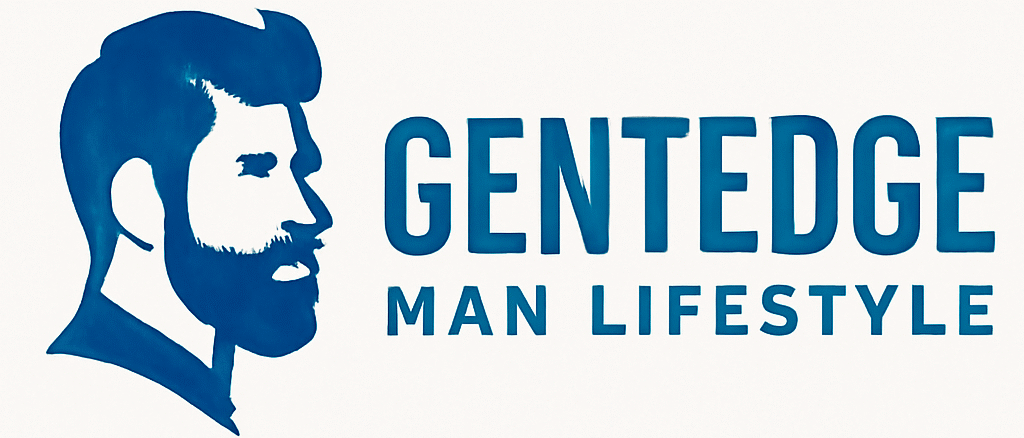Japanese samurai tattoo sleeves have become one of the most sought-after designs for men who want to showcase strength, honor, and warrior spirit through their body art. These intricate masterpieces blend traditional Japanese artistry with powerful symbolism that’s resonated with tattoo enthusiasts worldwide.
We’ve seen countless men transform their arms into stunning canvases that tell stories of ancient warriors, legendary battles, and timeless codes of honor. The bold imagery of samurai warriors, combined with classic Japanese elements like cherry blossoms, dragons, and koi fish, creates sleeve designs that are both visually striking and deeply meaningful.
Whether you’re drawn to the fierce expression of a battle-ready samurai or the serene beauty of traditional Japanese landscapes, these tattoo sleeves offer endless possibilities for personal expression. We’ll explore the rich symbolism, design elements, and cultural significance that make Japanese samurai sleeves the ultimate choice for men seeking powerful and authentic body art.
Traditional Japanese Samurai Warrior Designs for Full Sleeve Tattoos
Traditional samurai warrior designs form the cornerstone of authentic Japanese sleeve tattoos, offering timeless imagery that captures the essence of feudal Japan’s most revered fighters.
Ronin Samurai With Katana Sword
Ronin samurai designs showcase masterless warriors in their most vulnerable yet powerful state. We see these fallen heroes depicted with weathered faces and tattered clothing, their katana swords gleaming even though their circumstances. Artists typically position the ronin in contemplative poses, emphasizing the internal struggle between duty and survival.
The katana sword becomes the focal point in these designs, often extending across the entire forearm or upper arm section. Master tattoo artists incorporate traditional Japanese shading techniques called bokashi to create depth around the blade’s edge. Many designs feature the ronin’s long hair flowing in the wind, symbolizing freedom from feudal constraints.
Background elements commonly include cherry blossoms, storm clouds, or barren landscapes that reflect the ronin’s isolated journey. These compositions tell stories of honor lost and redemption sought, making them particularly meaningful for men who’ve faced their own life transitions.
Armored Samurai in Battle Stance
Armored samurai designs capture warriors at their most formidable, displaying the intricate details of traditional Japanese armor called yoroi. We observe these designs featuring layered plates, ornate shoulder guards, and protective face masks that create stunning visual complexity across sleeve tattoos. The battle stance positioning shows samurai with weapons raised, bodies coiled for action, and eyes focused on unseen enemies.
Lamellar armor pieces provide tattoo artists with opportunities to showcase their technical skills through precise line work and shading. Each armor segment requires careful attention to proportion and historical accuracy, ensuring the final design honors authentic samurai aesthetics. The interplay of light and shadow across metal surfaces creates dramatic contrast that makes these tattoos stand out.
Artists often incorporate ever-changing elements like flowing fabric, scattered leaves, or swirling mist around the armored figure. These additions enhance the sense of movement and energy while maintaining the design’s traditional Japanese artistic principles.
Samurai Helmet and Mask Combinations
Samurai helmet and mask combinations offer some of the most striking imagery in Japanese warrior tattoos. We find these designs featuring the iconic kabuto helmets with their distinctive horn ornaments, crescent moons, or animal motifs that identified different clans and ranks. The menpō face masks create intimidating expressions that were designed to terrify enemies in battle.
Demon masks called hannya sometimes replace traditional war masks, adding supernatural elements to the samurai imagery. These combinations blend historical accuracy with mythological power, creating designs that speak to both earthly warrior spirit and otherworldly protection. The contrast between ornate helmet decorations and fierce mask expressions provides visual tension that captures viewers’ attention.
Background clouds, lightning, or traditional Japanese patterns like seigaiha waves complement these helmet and mask designs. Artists use negative space effectively around these detailed pieces, allowing the intricate metalwork and facial features to command attention without overwhelming the overall composition.
Essential Elements to Include in Your Japanese Samurai Tattoo Sleeve

Creating a complete samurai sleeve requires careful selection of complementary elements that enhance the warrior’s story. These traditional Japanese motifs work together to build a cohesive narrative that celebrates the samurai’s virtues and cultural heritage.
Cherry Blossoms and Seasonal Flowers
Cherry blossoms (sakura) represent the fleeting nature of life and beauty in Japanese culture, making them perfect companions to samurai imagery. These delicate flowers symbolize the warrior’s acceptance of mortality and the precious nature of each moment. Seasonal flowers like chrysanthemums add layers of meaning about renewal and bravery, while peonies represent perseverance through life’s challenges. We recommend incorporating these blooms around the main samurai figure to soften the composition and create visual balance. Placement of sakura petals falling across the sleeve creates movement and connects different elements of your design.
Traditional Japanese Waves and Clouds
Waves and clouds serve as ever-changing background elements that represent life’s constant challenges and changes. These flowing motifs add movement to your sleeve while symbolizing the ever-changing nature of existence that samurai warriors learned to navigate. Traditional wave patterns, inspired by famous Japanese woodblock prints, create visual rhythm throughout the design. Cloud formations provide natural transitions between different sections of your sleeve, helping to frame the samurai and other key symbols. We suggest using these elements to fill negative space and create depth in your overall composition.
Koi Fish and Dragon Accents
Koi fish symbolize determination and the ability to overcome adversity, making them natural allies to samurai themes. These resilient creatures represent the warrior’s journey upstream against life’s obstacles, reinforcing messages of perseverance and strength. Dragons in Japanese culture embody power, wisdom, and protection, serving as spiritual guardians that complement the samurai’s role as a defender. We often see koi swimming through waves or around the samurai’s legs, while dragons can wrap around the arm or emerge from clouds above. Both creatures add narrative depth and enhance the spiritual aspects of your samurai story.
Japanese Calligraphy and Kanji Characters
Kanji characters provide personal meaning and cultural depth to your samurai sleeve design. Popular choices include virtues like “honor” (名誉), “courage” (勇気), and “loyalty” (忠誠), which directly reflect the samurai’s moral code of Bushido. Japanese calligraphy adds an authentic cultural touch while allowing you to incorporate personal mantras or meaningful phrases. We recommend working with your tattoo artist to ensure proper character selection and placement that complements your overall design. Strategic placement of kanji can help balance the composition and provide focal points that reinforce your sleeve’s central message.
Popular Samurai Tattoo Sleeve Styles and Artistic Approaches

Artists today offer diverse interpretations of samurai sleeve tattoos, each bringing unique visual elements and cultural authenticity to these powerful designs.
Traditional Irezumi Black and Gray Style
Traditional irezumi techniques create the most authentic samurai sleeve tattoos using classical Japanese tattooing methods. Artists focus on dramatic black and gray shading to develop intricate linework that emphasizes the warrior’s stoic character and disciplined nature. Subtle gradations highlight traditional armor details while maintaining the timeless aesthetic that’s defined Japanese body art for centuries.
Background elements like waves, clouds, and cherry blossoms complement the central samurai figure through careful composition. These motifs symbolize nature’s transient beauty and enduring strength, creating deeper meaning within the overall design. Master tattoo artists often spend months perfecting the delicate balance between bold imagery and refined shading techniques.
Neo-Traditional Colorful Samurai Designs
Neo-traditional approaches blend classical samurai imagery with vibrant modern color palettes that make each element pop with visual intensity. Artists use rich reds, deep blues, and emerald greens to highlight armor details, katana blades, and accompanying motifs like Japanese temples and cherry blossoms. Color selection enhances the symbolism of power, vitality, and peace while adding contemporary appeal to traditional themes.
Modern tattooing techniques allow for smoother color transitions and more ever-changing contrast than historical methods permitted. Artists can create stunning visual depth by layering complementary colors throughout the sleeve composition. These designs maintain cultural relevance while appealing to clients who prefer bold, eye-catching artwork.
Realistic Portrait-Style Samurai Warriors
Realistic samurai portraits capture the warrior’s soul through photo-realistic techniques that emphasize facial expressions, armor intricacies, and weapon details. Artists focus on creating lifelike representations that convey the samurai’s resolute expression and commanding presence through careful attention to lighting and shadow work. Sharp contrasts and subtle gray tones work together to produce three-dimensional effects that make the warrior appear to emerge from the skin.
These designs often concentrate on the samurai’s eyes and facial features to communicate strength, wisdom, and unwavering determination. Portrait realism requires exceptional technical skill and multiple sessions to achieve the level of detail necessary for convincing results. Artists must understand human anatomy and classical portraiture techniques to successfully execute these complex compositions.
Minimalist Modern Samurai Interpretations
Minimalist samurai sleeves reduce traditional imagery to essential lines and geometric shapes while preserving the warrior’s symbolic power. Artists use sparse linework and clean compositions to represent armor, katana, and other samurai elements through simplified forms that appeal to modern aesthetic preferences. These designs focus on negative space and strategic placement to create maximum impact with minimal visual complexity.
Contemporary geometric patterns can frame or incorporate samurai symbols to bridge traditional and modern design philosophies. Artists often employ single-color schemes or limited palettes to maintain the minimalist approach while ensuring cultural elements remain recognizable. This style attracts clients who want meaningful samurai symbolism without the visual density of traditional sleeve tattoos.
Best Placement Options for Japanese Samurai Sleeve Tattoos on Men

Different placement options offer unique advantages for showcasing your samurai tattoo’s artistic elements and symbolic meaning. We’ll explore the most effective positioning strategies that complement both your body’s natural contours and the design’s storytelling potential.
Full Arm Sleeve From Shoulder to Wrist
Full arm sleeves provide the most comprehensive canvas for creating detailed samurai narratives that span your entire arm. This placement allows artists to incorporate multiple design elements including the samurai warrior in various ever-changing poses, traditional Japanese landscapes featuring Mount Fuji or ancient temples, and complementary motifs like cherry blossoms or koi fish swimming through waves.
Artists can develop complex storytelling sequences that flow naturally from shoulder to wrist, creating visual chapters that represent different aspects of the samurai’s journey. The extensive surface area accommodates intricate armor details, facial expressions, and environmental elements that smaller placements simply can’t support.
We recommend this placement for men seeking maximum visual impact and storytelling depth in their samurai sleeve design.
Half Sleeve Upper Arm Placement
Half sleeve upper arm placements offer concentrated visual impact while maintaining professional flexibility for workplace environments. This positioning works exceptionally well for focused samurai portraits, single warrior figures in contemplative poses, or detailed representations of traditional armor and weaponry.
The upper arm’s natural muscle structure enhances the three-dimensional appearance of samurai armor and creates dramatic shadowing effects that bring the warrior to life. Artists often incorporate symbolic elements like katana swords positioned vertically along the arm’s length or cherry blossom branches that frame the central samurai figure.
This placement suits men who want meaningful samurai imagery without committing to full sleeve coverage.
Forearm-Only Samurai Designs
Forearm-only designs create subtle yet powerful statements that showcase samurai symbolism in everyday interactions. These placements typically feature minimalist samurai elements such as a solitary warrior silhouette, traditional Japanese sword positioning, or symbolic motifs like the samurai’s mon (family crest) surrounded by geometric patterns.
The forearm’s visibility makes it ideal for displaying meaningful kanji characters that represent honor, strength, or personal mantras alongside smaller samurai imagery. Artists can create striking compositions using negative space and bold linework that maintain clarity even in compact designs.
We find this placement perfect for men seeking meaningful samurai symbolism without overwhelming visual presence.
Wraparound Sleeve With Back Panel Extension
Wraparound sleeves with back panel extensions create the ultimate canvas for epic samurai battle scenes and comprehensive cultural narratives. This placement extends from the arm across the shoulder blade and upper back, allowing artists to develop panoramic scenes featuring multiple samurai warriors, detailed industry backgrounds, and complex mythological elements.
The extended surface area supports large-scale compositions such as famous historical battles, temple complexes nestled beneath Mount Fuji, or dramatic scenes of ronin warriors wandering through cherry blossom forests. Artists can incorporate flowing elements like traditional Japanese clouds and waves that connect the arm design seamlessly with the back panel imagery.
This comprehensive approach suits men who want to create a truly immersive samurai industry that tells complete stories across multiple body areas.
Choosing the Right Tattoo Artist for Your Samurai Sleeve

Finding the perfect artist for your samurai sleeve determines whether you’ll receive an authentic masterpiece or a disappointing imitation. We’ll guide you through the essential criteria that separate exceptional samurai tattoo artists from the ordinary.
Artists Specializing in Japanese Traditional Style
Seek artists who specialize in traditional Japanese styles, particularly Irezumi techniques. These skilled professionals possess deep familiarity with classic motifs including samurai warriors, cherry blossoms, temples, and symbolic elements such as Mount Fuji and katana swords. Their expertise ensures intricate line work, shading, and color palettes align with traditional aesthetics while allowing for modern adaptations.
Traditional Japanese tattoo artists understand the complex layering systems that create depth and movement in samurai sleeve designs. They’ve mastered the precise techniques required for authentic wave patterns, cloud formations, and the detailed armor plating that defines legendary warrior imagery.
Experience with Irezumi style translates directly to superior samurai tattoos because these artists grasp the cultural significance behind each design element. They know how to balance bold outlines with subtle gradations that bring samurai figures to life on your skin.
Portfolio Review and Style Matching
Review artists’ portfolios focusing specifically on Japanese tattoo sleeves and samurai themes. This reveals their skill in handling large scale arm pieces and their ability to integrate various Japanese cultural symbols cohesively. Matching your desired style—whether realistic photo realism or vibrant traditional color work—helps ensure satisfaction with the final piece.
Examine multiple samurai sleeve examples in their portfolio to assess consistency in quality and attention to detail. Look for clean line work in katana swords, proper proportions in warrior figures, and seamless integration of background elements like cherry blossoms and temple structures.
Compare different artistic approaches within their samurai work to determine if their style aligns with your vision. Some artists excel at dramatic black and gray compositions while others specialize in vibrant color palettes that enhance the power and vitality of samurai imagery.
Cultural Authenticity and Respect Considerations
Choose artists who respect the cultural context of the samurai’s code of honor, Bushido. They should accurately portray traditional armor, weaponry, and settings such as Japanese temples or cherry blossom trees. This respect extends to incorporating meaningful symbolism such as loyalty, inner strength, and peace throughout the design composition.
Authentic representation requires understanding samurai historical significance beyond surface level imagery. The right artist recognizes that samurai tattoos represent more than aesthetic appeal—they embody centuries of Japanese warrior tradition and spiritual philosophy.
Cultural sensitivity becomes crucial when depicting sacred elements like temple architecture, religious symbols, or legendary figures from Japanese history. Artists who demonstrate genuine appreciation for these cultural foundations create tattoos that honor rather than appropriate samurai heritage.
Experience With Large-Scale Sleeve Projects
Select artists experienced with full sleeve tattoos who can manage flow and composition effectively. A samurai sleeve is a complex, large project covering the entire arm, often shoulder to wrist. These professionals ensure designs complement arm contours with seamless transitions while maintaining visual coherence throughout the extensive piece.
Experience with large scale projects means understanding session planning and healing processes essential for durable, high quality tattoos. Seasoned sleeve artists know how to pace the work across multiple appointments while maintaining artistic consistency.
Artists skilled in sleeve composition create natural storytelling flow from shoulder to wrist, allowing your samurai narrative to unfold organically across your arm. They position key elements like warrior figures, cherry blossoms, and cultural symbols to maximize visual impact while respecting anatomical considerations.
Pain Management and Healing Process for Samurai Sleeve Tattoos

Getting a Japanese samurai tattoo sleeve involves important commitment to both the artistic process and physical endurance. We’ll guide you through essential pain management strategies and healing protocols that ensure optimal results for your samurai sleeve.
Expected Pain Levels for Different Arm Areas
Outer arm areas like the deltoid and biceps typically produce moderate pain levels due to thicker skin and natural muscle cushioning. These locations serve as ideal starting points for your samurai sleeve sessions since they’re generally more tolerable.
Inner arm regions present higher pain intensity because of thinner skin and proximity to nerve endings. We recommend preparing mentally for increased discomfort when your artist works on these sensitive areas.
Elbow and wrist zones create the most challenging pain experiences during samurai sleeve tattooing. Bone proximity and concentrated nerve clusters make these spots particularly intense for most clients.
Full samurai sleeves span multiple pain zones, so you’ll experience fluctuating discomfort levels throughout different sessions. Understanding this variation helps you prepare appropriately for each appointment.
Multiple Session Planning and Scheduling
Session frequency for samurai sleeves typically ranges from 3 to 6 appointments, depending on design complexity and your pain tolerance levels. Most artists recommend spacing sessions 2 to 4 weeks apart for optimal healing.
Individual sessions usually last 3 to 5 hours each, allowing sufficient time for detailed samurai elements like armor details and facial features. Longer sessions can compromise quality due to fatigue and increased pain sensitivity.
Design progression follows a strategic approach where artists focus on different elements during each visit. Outlining comes first, followed by shading work, and finally vibrant color fills that bring your samurai imagery to life.
Recovery periods between sessions allow your skin to heal properly and reduce potential complications. We strongly advise against rushing the process, as proper healing ensures better final results.
Proper Aftercare for Large Tattoo Pieces
Cleaning protocols require gentle washing with antibacterial soap and lukewarm water several times daily. Avoid scrubbing or using harsh chemicals that could damage the healing samurai artwork.
Moisturizing routine involves applying recommended ointments or unscented lotions to keep the tattooed area hydrated. Proper moisture levels prevent excessive scabbing and maintain ink vibrancy.
Sun protection becomes crucial during the healing period, as UV exposure can fade colors and damage healing skin. We recommend covering your samurai sleeve or applying high SPF sunscreen when outdoors.
Clothing choices should prioritize loose fitting garments that won’t rub against your healing tattoo. Tight sleeves can cause irritation and potentially damage the intricate samurai details.
Activity restrictions include avoiding swimming, excessive sweating, and heavy lifting during initial healing stages. These precautions prevent infection and ensure optimal healing conditions.
Timeline for Complete Healing and Touch-Ups
Surface healing typically occurs within 2 to 3 weeks, when the outer layer of skin has recovered from the tattooing process. But, deeper skin layers continue healing for several more months.
Complete healing takes up to 6 months for all skin layers to fully recover from the extensive work involved in samurai sleeve tattoos. Patience during this period ensures the best long term results.
Touch-up scheduling should wait at least 2 to 3 months after your final session to allow complete healing assessment. Most artists include minor touch-ups in their original pricing for samurai sleeve projects.
Color maintenance may require additional touch-ups over time, especially for vibrant elements like cherry blossoms or dragon accents in your samurai design. Proper aftercare significantly extends the time between necessary touch-ups.
Cost Considerations for Japanese Samurai Tattoo Sleeves

Investing in a Japanese samurai tattoo sleeve requires careful financial planning due to the important costs involved. Understanding the various pricing factors will help you budget appropriately for this meaningful body art investment.
Factors Affecting Overall Pricing
Design complexity serves as the primary cost driver for samurai sleeve tattoos. Intricate armor details, traditional weapons, and background elements like waves or dragons increase both time requirements and overall pricing. Artist experience and reputation significantly impact rates, with renowned specialists in traditional Japanese irezumi commanding premium prices that reflect their expertise and market demand.
Studio location affects pricing structures across different markets. Major cities and popular areas typically charge higher rates due to increased overhead costs and market demand. Time requirements directly influence total costs, as full sleeves usually demand 20 to 30 hours spread across 5 to 8 sessions.
Body area and arm size contribute to pricing variations between clients. Larger arms require more ink coverage and extended session times, naturally increasing the final investment amount.
Session-Based Payment Options
Session pricing offers flexible payment structures for managing large tattoo investments. Many studios charge per session rather than hourly rates, with typical sessions lasting 3 to 4 hours each. Standard rates around $400 per hour can be reduced through session packages, such as $1400 for 4-hour sessions representing discounted pricing.
Multiple session scheduling spreads costs over several months while allowing proper healing between appointments. This payment approach helps clients manage their budget while ensuring adequate recovery time between intensive tattooing sessions.
Quality Investment vs Budget Alternatives
Prioritizing skilled artists ensures lasting quality for culturally important samurai imagery. Highly experienced tattoo artists deliver detailed work with superior longevity, especially important for traditional Japanese designs requiring cultural authenticity and technical precision.
Budget alternatives may compromise long-term satisfaction through reduced detail quality, less vibrant colors, or faster fading over time. Given the permanent nature of tattoo sleeves, investing in quality craftsmanship over lower prices typically provides better value and cultural respect.
Additional Costs for Color and Detail Work
Color additions significantly increase session length and pricing due to the extra time and specialized skills required. Traditional Japanese tattoos often feature vibrant color palettes and detailed shading work that extend beyond basic black ink applications.
Intricate background elements and shading techniques add complexity requiring additional sessions and higher costs. These detailed elements enhance the overall visual impact but require budgeting for extended completion timelines and increased investment amounts.
Cultural Significance and Symbolism Behind Samurai Tattoo Designs

Understanding the deep cultural meanings behind samurai tattoo designs helps us appreciate their significance beyond mere aesthetic appeal. These powerful symbols carry centuries of Japanese tradition and warrior philosophy that continue to resonate with modern men seeking meaningful body art.
Honor, Loyalty, and Bushido Code Meanings
Honor stands as the cornerstone of samurai identity, tightly linked to their adherence to the Bushido code—”the way of the warrior.” We see this moral compass reflected in tattoo designs that emphasize justice, courage, compassion, politeness, honesty, integrity, loyalty, and discipline. Samurai tattoos often feature warriors in battle or meditative stances, representing self-control, moral duty, and sacrifice.
Loyalty emerges as another defining characteristic, reflecting the samurai’s unwavering service to their lord. These designs honor the samurai’s willingness to put duty above personal desires, even risking life for their responsibilities. Artists capture this devotion through imagery showing samurai kneeling before their masters or standing steadfast in challenging situations.
Courage manifests in tattoo designs depicting samurai facing overwhelming odds or preparing for battle. We find these representations particularly powerful as they embody the warrior’s bravery and skill in combat, inspiring wearers to embrace fearlessness in their own challenges.
Historical Context of Samurai Warriors
Samurai culture originated in the 12th century when these elite warrior nobles followed strict codes of conduct influenced by Zen Buddhism and traditional Japanese culture. Tattoos serve as a bridge to this historical past, portraying the noble warrior class’s ideals and their roles in feudal Japan. Although tattooing was generally considered dishonorable for samurai, some secretly inked identification marks for recognition after death in battle.
Warriors from feudal Japan established principles that continue to influence tattoo symbolism today. We observe how these historical figures represented aristocratic values, military prowess, and unwavering dedication to their social hierarchy. Their legacy lives on through tattoo art that celebrates their disciplined lifestyle and commitment to honor.
Traditional Japanese society viewed samurai as the embodiment of masculine ideals and noble character. These historical warriors demonstrated that true strength comes from mental discipline rather than physical power alone, a concept that resonates strongly with modern tattoo enthusiasts.
Spiritual and Philosophical Elements
Philosophically, samurai tattoos embody Zen principles such as self-mastery, balance, and acceptance of impermanence. We see these concepts represented through symbolic elements like sakura (cherry blossoms), which represent life’s fleeting nature. Weapons in the imagery emphasize readiness and strength while maintaining spiritual harmony.
Spiritual elements in samurai tattoos inspire wearers to embrace discipline, courage, and honor in their personal lives. These designs often incorporate meditation poses or moments of quiet reflection, showing that true warriors possess both physical and mental strength. Buddhist influences appear through lotus flowers, temple imagery, and symbols of enlightenment.
Acceptance of mortality becomes central to samurai tattoo philosophy, with designs frequently featuring themes of life and death. We find this fearless embrace of mortality particularly compelling as it encourages wearers to live authentically and purposefully.
Respecting Japanese Cultural Heritage
Cultural appreciation requires understanding that samurai tattoo designs carry centuries-old meanings tied to Japanese history and philosophy. We emphasize that these images aren’t mere decoration but represent profound cultural significance that deserves respect. Proper appreciation ensures these tattoos honor the legacy of the samurai rather than appropriating or trivializing their heritage.
Respectful representation involves working with artists who understand traditional Japanese symbolism and cultural context. We recommend researching the exact meanings behind chosen elements to ensure your tattoo reflects genuine appreciation rather than superficial adoption of foreign imagery.
Education about samurai history enhances the personal connection to your tattoo while showing respect for Japanese culture. Understanding the warrior’s code, historical struggles, and philosophical beliefs transforms your body art into a meaningful tribute to this remarkable warrior tradition.
Conclusion
Japanese samurai tattoo sleeves represent more than just stunning body art – they’re a powerful expression of timeless values and personal transformation. We’ve explored how these intricate designs combine authentic Japanese artistry with profound symbolism that resonates with modern men seeking meaningful tattoos.
The journey to completing your samurai sleeve requires careful consideration of design elements placement style and artist selection. From traditional irezumi techniques to contemporary interpretations each approach offers unique ways to honor the warrior spirit while creating a personalized masterpiece.
Remember that investing in a quality samurai tattoo sleeve is a commitment to both craftsmanship and cultural respect. When done thoughtfully these tattoos become lasting tributes to the principles of honor courage and resilience that define the samurai legacy.
Your samurai sleeve will serve as a daily reminder of your own warrior’s journey embodying the strength and determination needed to face life’s challenges with dignity and purpose.
Frequently Asked Questions
What makes Japanese samurai tattoo sleeves so popular among men?
Japanese samurai tattoo sleeves represent strength, honor, and warrior spirit through intricate traditional Japanese artistry. They combine powerful symbolism with visually striking designs featuring samurai warriors, cherry blossoms, dragons, and koi fish. These tattoos tell meaningful stories of ancient warriors and legendary battles, appealing to men seeking body art that reflects their personal journey and values.
What are the main design elements in traditional samurai tattoo sleeves?
Traditional samurai sleeve tattoos feature core elements including samurai warriors in various poses, cherry blossoms symbolizing life’s fleeting nature, traditional Japanese waves and clouds as dynamic backgrounds, koi fish representing determination, dragons for spiritual protection, and Japanese calligraphy adding personal meaning. These complementary motifs work together to enhance the warrior’s narrative and cultural authenticity.
What different artistic styles are available for samurai tattoo sleeves?
Popular samurai tattoo styles include traditional irezumi techniques with dramatic black and gray shading, neo-traditional designs featuring vibrant color palettes, realistic portrait-style tattoos capturing lifelike warrior representations, and minimalist interpretations using essential lines and shapes. Each style maintains cultural relevance while offering different aesthetic approaches to suit personal preferences and modern tastes.
Where is the best placement for a Japanese samurai tattoo sleeve?
The best placement depends on your preference for storytelling scope. Full arm sleeves allow comprehensive narratives, half sleeves provide concentrated visual impact, forearm-only designs offer subtle statements, and wraparound sleeves with back panel extensions create immersive cultural narratives. Each placement option caters to different lifestyles while ensuring the samurai imagery resonates meaningfully with the wearer.
How do I choose the right tattoo artist for a samurai sleeve?
Look for artists specializing in traditional Japanese styles, particularly irezumi techniques, who understand cultural authenticity. Review their portfolios to ensure their style matches your vision and verify they have experience with large-scale sleeve projects. The artist should demonstrate cultural respect in portraying samurai imagery and possess skills to manage flow and composition for cohesive designs.
How much pain should I expect during a samurai sleeve tattoo?
Pain levels vary by arm location. Outer arm areas are generally more tolerable, while inner arm areas, elbow, and wrist can be more painful. Sessions typically last 3-6 hours and are spaced 2-4 weeks apart. Proper aftercare including cleaning, moisturizing, sun protection, and activity restrictions is essential. Complete healing takes up to 6 months.
What’s the typical cost range for a Japanese samurai tattoo sleeve?
Costs vary based on design complexity, artist experience, studio location, and body area size. Session-based payments help manage expenses over time while ensuring proper healing between appointments. Adding color and intricate details significantly increases both session length and overall costs. Prioritize quality craftsmanship over budget alternatives for lasting satisfaction.
What cultural significance do samurai tattoos carry?
Samurai tattoos embody deep Japanese cultural values including honor, loyalty, and the Bushido code. They reflect historical samurai warrior principles from feudal Japan and incorporate spiritual elements like Zen philosophy, encouraging discipline and courage. It’s important to approach these designs with genuine respect and appreciation for their cultural heritage rather than as mere aesthetic choices.











